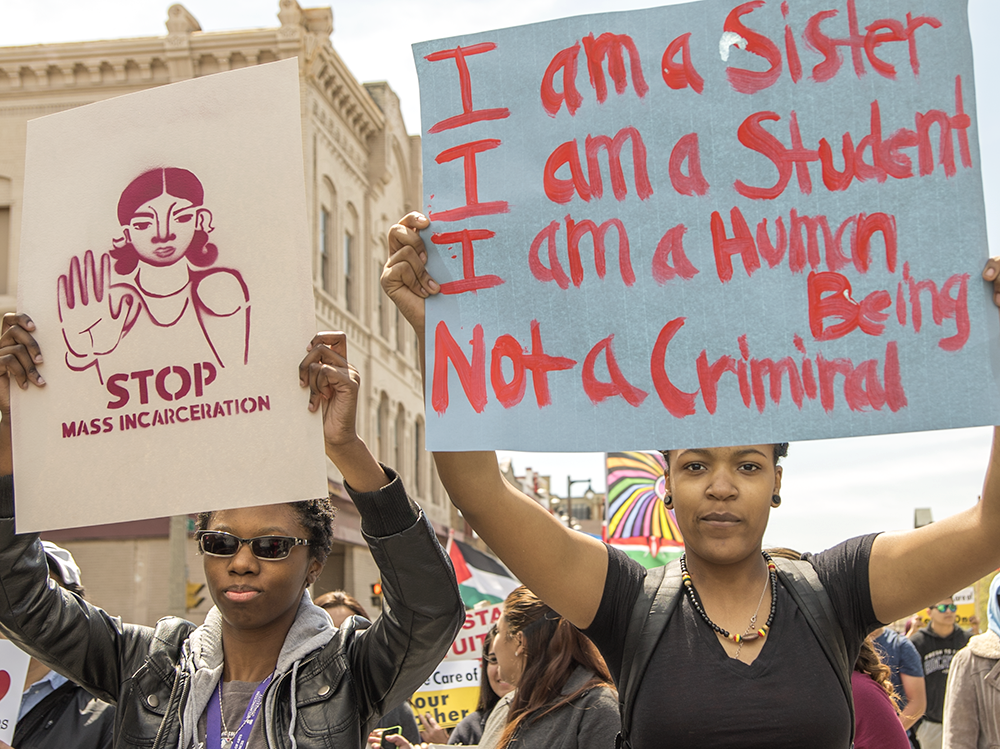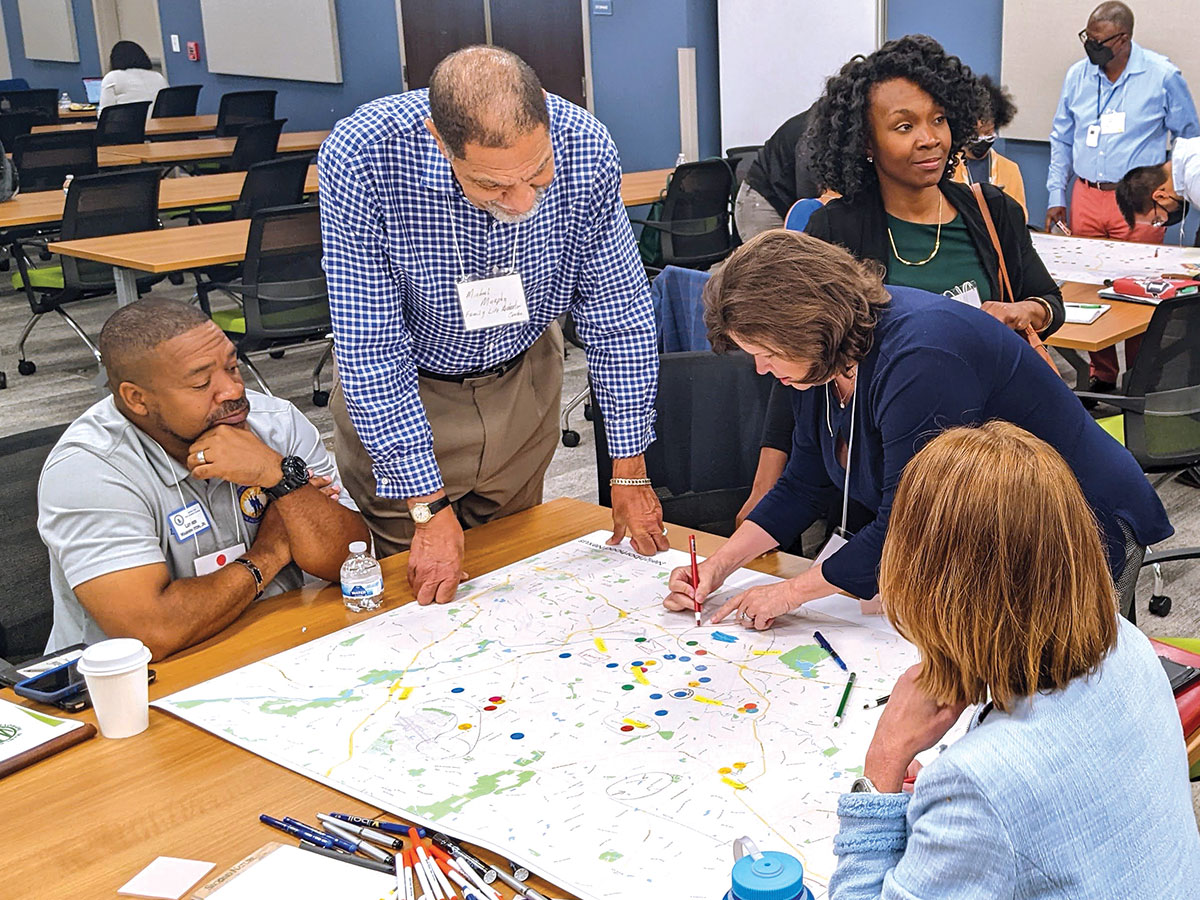What Makes a Bad Grant? It’s Time to Change How We Decide

Since 1925, the Edward W. Hazen Foundation has been committed to supporting young people and communities of color to organize and lead to dismantle structural inequity based on race and class. Consequently, the organization sees building relationships with grantees as central to capacity building. But in order to support grassroots movements and build communities, sector-wide perceptions of what constitutes a successful grant need to change. In this article, Isabel Sousa-Rodriguez, the program director at Hazen, walks you through how to make a powerful paradigm shift. —The Editors
In March of 2019, I started my first job in philanthropy as the program officer for the Edward W. Hazen Foundation after working 12 years as a community organizer. I was nervous but tried to show confidence. I had been on the grantseeker side of the table my whole life and would now be a grantmaker.
First, I “inherited” grants from my predecessor and dove into learning the foundation’s grantmaking strategy through grants we made previously. I was lucky. The Hazen Foundation had just completed a year of strategic planning and focus groups with grantees to collect their input on our funding priorities, the funder-grantee relationship, and capacity building. The depth of their knowledge became my blueprint for my new job as a grantmaker. I sought to implement our five-year strategic plan to spend down, following the leadership of the communities our grants serve.
The pressures I had previously endured from philanthropy about being an “accountable grantee” taught me a lot about how important it is to subvert this power dynamic, and instead be an accountable grantmaker. Having sat on both sides, I know how important it is to flip the table and consider, “How is my foundation accountable to the community for how we manage funds in the public interest?”
I admit I have stumbled every step of the way. There are grants I’ve made that I regret and other grants I haven’t made yet that I should make. I have faced the inconvenient truth of philanthropy that grants alone aren’t a magical solution to everything. Money doesn’t equal impact. In fact, grants can never be guaranteed to have intended outcomes. Because of this, it is easy for grantmakers to feel shame or guilt about “making a bad grant” and the tensions that often do arise with grantees to figure out what went wrong and what to do about it.
However, I don’t think “bad grants” are a dead end. Instead, I embrace them as an opportunity to learn more about the community, to deepen partnership with grassroots leaders, and to help the foundation learn ways to improve our grantmaking. Too many grantmakers harbor fears of discussing their mistakes for a myriad of reasons—fear for our own positions, fear for our reputations, fear of our supervisors, guilt over “waste,” shame over our own failings. We can help each other overcome that fear.
One important way to make the “bad grant” discussion more productive and less stigmatized is by changing how we make these judgments in the first place. Historically, a grant has been evaluated based on what it does—what deliverables, outcomes, impacts, etc., we can point to. Since, again, these outcomes are often beyond our control, I’ve found that a better rubric is looking at the “how” instead of the “what.” This is especially important given what we know about skewed, inequitable giving practices.
Annual reports keep casting a shameful spotlight on philanthropy’s complicity in inequity: Only 1.8 percent of total philanthropic giving in the U.S. is going to Black communities, 0.2 percent is going to AAPI communities, 0.28 percent to LGBTQ communities, and so on. As funders, we have to take stock of our grantmaking and our actions—as individuals and as institutions. As we reflect on what we consider to be bad grantmaking, we need to focus on how we keep deliberately and disproportionately underfunding grassroots leadership. Whether or not your foundation funds social justice systems change, there is a proven ethical and strategic value in sharing/ceding decision-making about grantmaking strategy with/to the directly impacted leaders of the grants you are making.
Good grants versus bad grants
So, how might we define “good grants’’ versus “bad grants?” While every relationship with a grantee is constantly evolving from moments of close kinship to moments of disagreement, our ultimate goal must be to do the hard work to strengthen relationships—to trust their lived experience and wisdom as we work together to achieve common goals.
At the Hazen Foundation, I have found that the best grants are those meeting three core criteria:
- Grants that fund work led by and accountable to directly impacted communities.
- Grants that provide long-term (three to 15 years) general support.
- Grants that provide additional resources beyond the general support grant to build institutional infrastructure and for organizational development planning. This can include new tools, technical assistance, or other opportunities to amplify the organization’s influence and impact in their field.
There are also three key “bad” grants:
- “Savior” grants, i.e., grants to programs that were not developed through the decision-making of those most impacted.
- Grants that are not accountable to community feedback to improve the grantmaking strategy.
- Grants that expect too much for too little money and impose reporting requirements that the grantee did not help to set or define.
Too often, foundations define “bad grants” using definitions of risk that systematically underfund communities of color. If a grantee isn’t meeting your expectations, your foundation should pause to examine its expectations. Are your expectations unreasonable? Are you considering the systemic inequity that the grantee is facing and how it impacts their intended outcomes? Sometimes, you’re not making bad grants, but you might be enforcing bad funding practices. Sometimes a great grant hits a crisis. Sometimes a terrible grant surprises you.
Here are my five tips for grantmakers coming to grips with their own good and bad grants:
- Recognize shame and guilt about grants that went wrong as an opportunity to grow. Dive into difficult and important conversations about new grantmaking strategies that effectively empower community as partners in problem solving.
- Embrace transparency, open learning, and loving accountability.
- Leverage every philanthropic and nonprofit relationship possible to achieve goals in ways that mutually share power.
- Confront implicit bias at your foundation. Examine how your reporting requirements, eligibility criteria, or site visits (even virtual) exert power. Consider yourself a guest who is partnering with grantees to solve an important problem, accompanying them on a learning journey.
- Stay for the journey. Fund without restrictions. Fund long term.
As an organizer, I mostly want to tell you that you are not alone. Philanthropy has prioritized, hired, and privileged too many oppressive institutions and leaders for too long. In 2021, we can pave a new path. You can start small by increasing flexibility for grantees around deadlines and reporting to prioritize what you can learn through deeper relationships with them. Or, you can go big like the Ford Foundation’s latest $1 billion commitment to help organizations building institutional and long-term strategic sustainability to reduce inequality.
Hazen has chosen to go all in for our grantees, investing the totality of our endowment in their current strategies to build power and institutional sustainability. Again, don’t isolate yourself. Join powerful alliances of grantmakers and grassroots leaders learning in one-on-one conversations that build to include wider circles of trusted partners. I am learning alongside you. I am flawed and I am doing everything I can to become a better funder—to be more accountable. We can do it together.
Photo: In the spring of this year, Voces de la Frontera, a community organization led by low-wage workers that received a $25,000 grant from the Edward W. Hazen Foundation in 2020, organized a demonstration for immigrant rights. Photo by Flickr user Joe Brusky.
This article was originally published by Inside Philanthropy.



